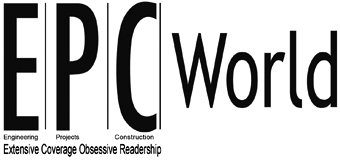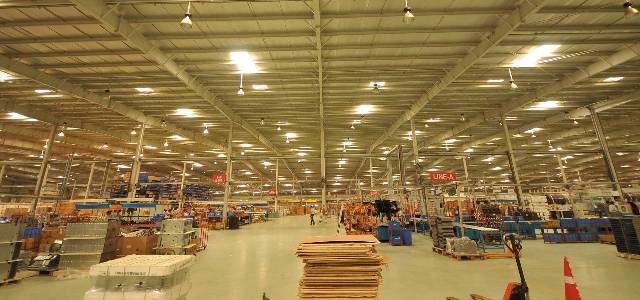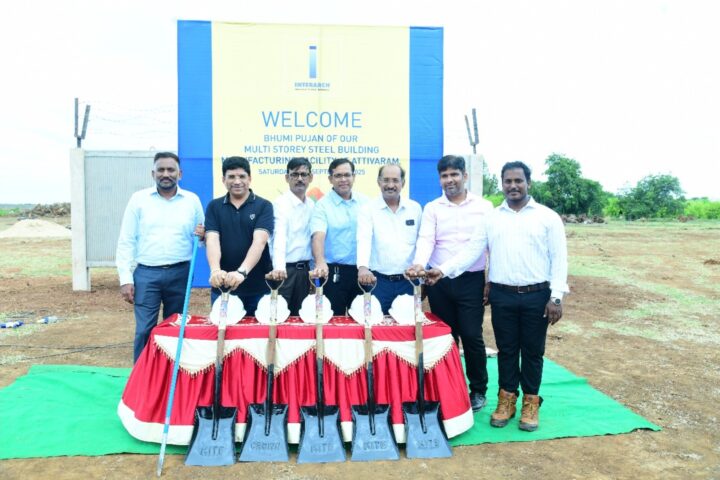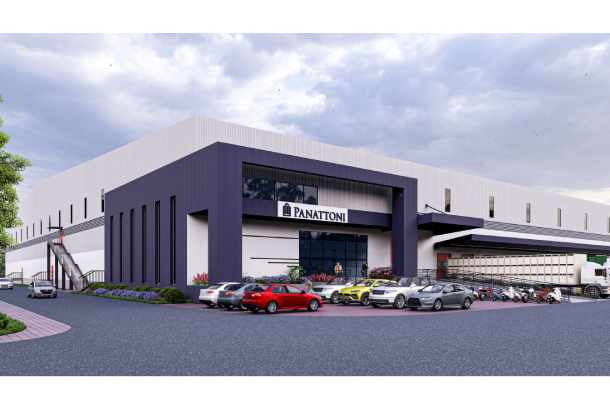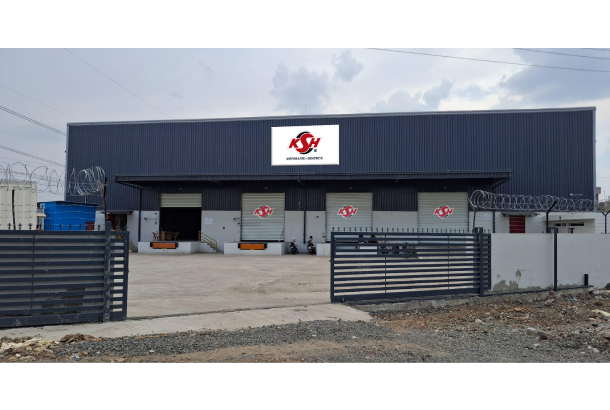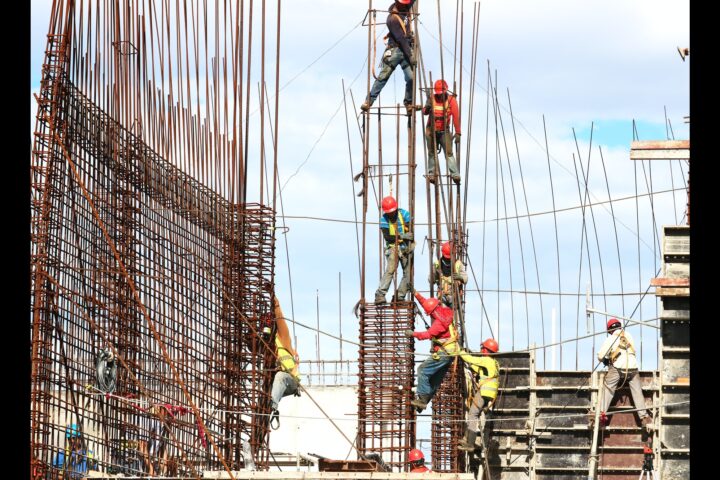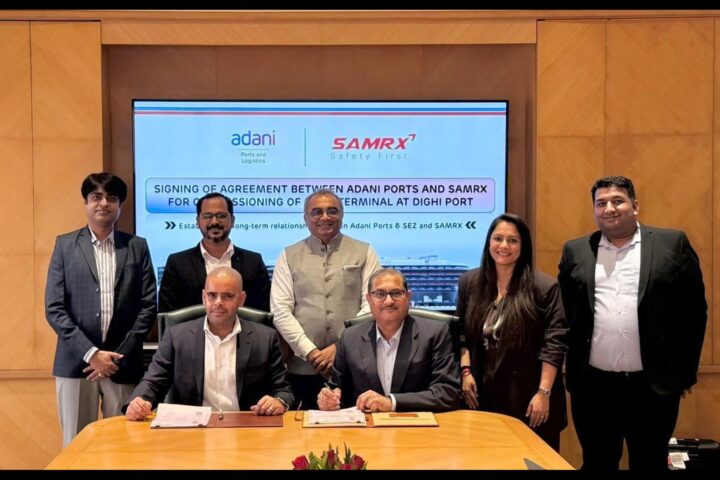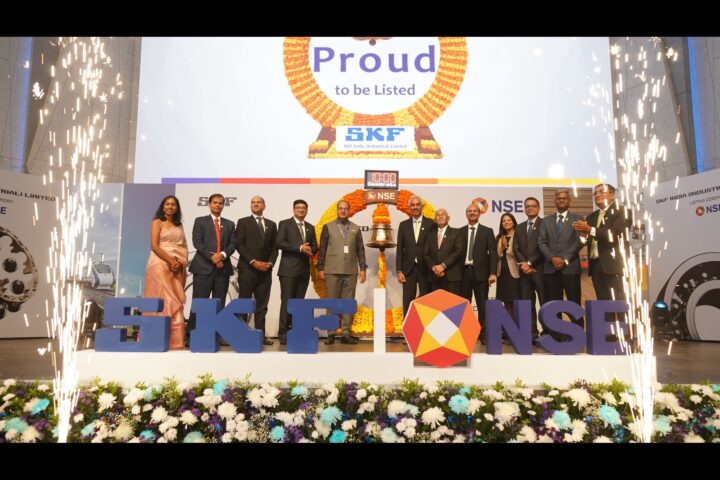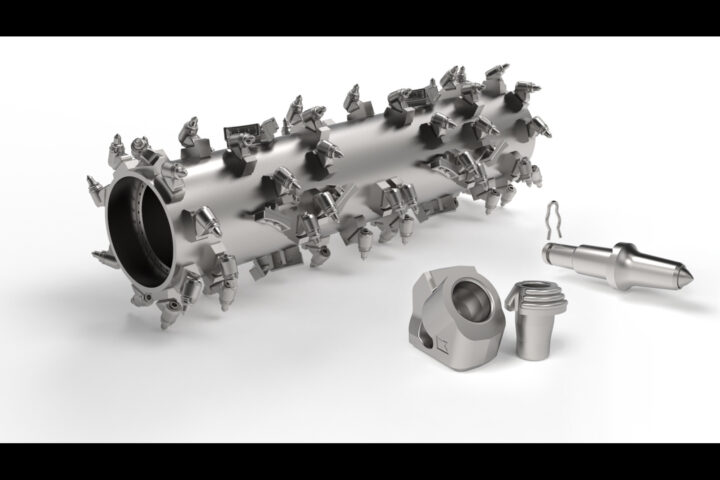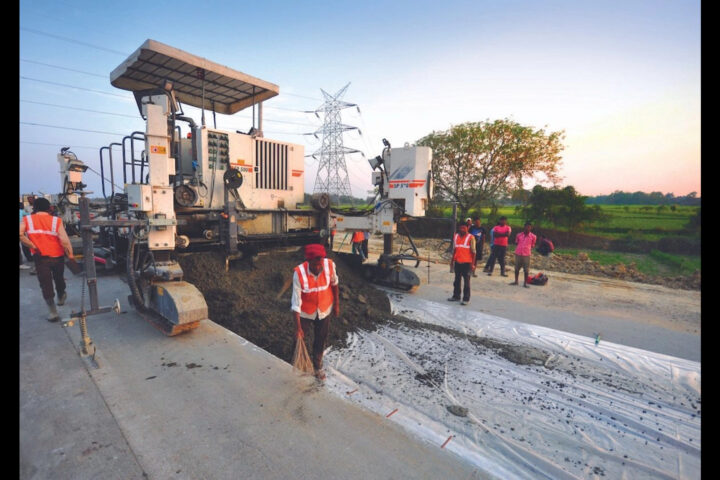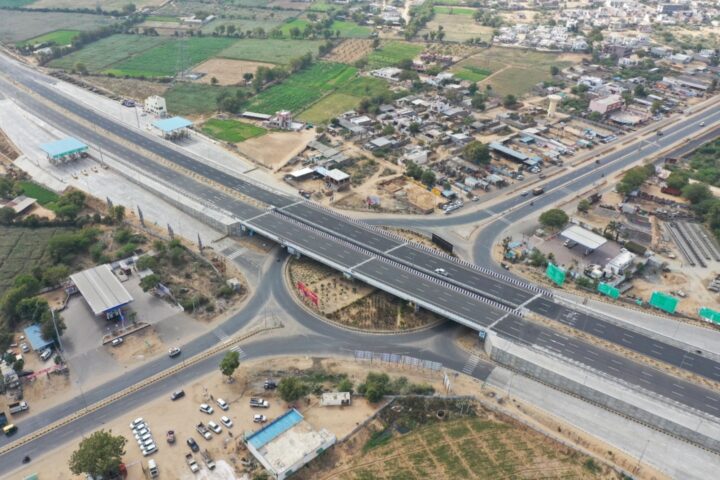By Tejasvi Sharma, Chief Editor, EPC World
Slowly but steadily PEB is increasingly being favoured in almost all the infrastructure projects be it ports, metros, rail networks, airport hangers or complex projects. The industry is growing at a staggering rate compare to other building materials. The article highlights the current scenario and market demand for PEB in India
Pre-Engineered Buildings is taking the construction industry by storm. Pre-Engineered Buildings know popularly by its acronym PEB is today the fastest growing sector in India. There is no dearth of PEB projects in India. Just Google it with keywords “PEB Tenders India”, the results displayed are quite impressive and enormous and can be concluded that there are plenty of PEB projects in the tendering stage. There are plenty of tenders for “Construction of PEB shed, structures” from government bodies such as India Railways and the Airport Authority of India. The tendering requirements do not stops at “Construction of PEB shed, structures”, but it goes far further with requirements such as “design, engineering, supply, fabrication, erection and construction of peb (pre-engineered building) shed / warehouse with mezzanine floor with smoke detection & sprinkler system along with the associated allied civil, structural, electrical & instrumentation and mechanical works.” Looking at this type of requirements, it is hard to imagine just two decades this industry was relegated to just executing warehousing projects that too quite a few in numbers. “When PEB were introduced in India in late 1990’s, one of the first applications was in construction of oil filling stations as Canopy,” says P K Nagarajan, Director & CEO, Tiger Steel Engineering (India). Back than PEB structures were mostly imported from Middle East. Since then slowly and steadily PEB has entrenched the construction and infrastructure requirements for faster, durable and safer construction. Today, PEB has achieved what other construction materials have. Not only the once dull looking warehouses but aesthetically appealing malls, stadiums, auditoriums, educational facilities, tall buildings, dormitory, luxury villas on hill resorts, airport hangers, in fact all complex structures can be constructed by PEB. “Over the last two decades PEB has been steadily making inroads into construction of warehouses, factories buildings, process buildings, aircraft hangars, stadium, exhibition centres, school buildings and more recently into low cost housing,” says P K Nagarajan.
The advantage of PEB over other construction materials is the exclusive use of steel as the major component to create PEB structure. Steel structures (PEB) compare to other building materials – precast, concrete, cement – are quicker to construct, have recycle value and conforms to green norms. They can be easily re-locatable compared to conventional brick & mortar construction.
“Steel is versatile in nature, tensile, highly durable, recyclable, good scrap value and can withstand external pressures such as earthquakes when used in the form of a building. It has a high strength to weight ratio which means it has high strength per unit mass. So no matter how large the overall structure is, the steel sections will be small and lightweight, unlike other building materials and have a good load carrying capacity. Steel can be easily fabricated as it is flexible. It can be molded into any shape without changing its properties and also converted into sheets or other products as per the design. Steel sections can be produced off-site at shop floors and then assembled onsite using nut & bolt connections. This saves time and increases the efficiency of the overall construction process resulting in faster project completion,” says D Raju, Managing Director, Kirby Building Systems & Structures India.
“Steel is used in the PEB structures. All the primary members are fabricated out of high strength steel plates with minimum yield strength of 345 mpa. While the secondary members such as purlins are manufactured out of galvanised steel with higher galvanised coating of 275 gsm and yield strength of 345 mpa. Roofing sheets are manufactured of Bare Alu Zinc with yield strength of 550 mpa, while the wall cladding sheets are colour coated Alu Zinc Sheets. The main advantages are that these materials are easily available in the India Market, provide strength and durability,” says P K Nagarajan.
Gaining Acceptance Increasing Market Share
The many advantages of PEB has made it industry favorite for quicker and timely construction. The industry has logged a growth of 15-20% in the last few years. Industry leaders taking the ever growing infrastructure projects in to consideration are of the view that in the coming years PEB will grow at a staggering rate of 20-30%. However, market research analysts at Technavio predict the PEBs market to post an impressive CAGR of more than 16%. “The current demand for PEB can be gauged from the fact there has been significant rise in capacity utilisation of the major players in the industry and running to full capacity. So according to me, PEB demand is nearing annual demand of 0.8 to 1 million ton in the near term. The major sectors that would contribute maximum to PEB industry growth in the next three years are logistics & warehousing, manufacturing and infrastructure & housing,” says P K Nagarajan.
Nikhil Bothra, Director, EPACK Polymers foresee a promising market and says “A lot of innovation is happening with the use of steel for building materials and therefore we foresee a promising market for steel in the field of construction. As the construction and infrastructure development is on the surge, there lies a gamut of scope for mainstream adoption of PEB – both in private and public sectors. Also, quick construction of PEBs mean that organisation can generate revenue faster, if projects start early. This is another notable advantage that will fuel the growth of pre engineered buildings in future. Apart from functionality, lots of design and cladding options are being developed for PEBs which make it aesthetically appealing and customisable. The residual value of PEBs are also higher which gives it an edge above conventional construction. The steel used in construction of PEBs, reusable and recyclable, which make PEBs eco-friendly”.
Going Digital: Embracing Technology
The earlier clients for PEB were for warehouses, so were the designs which were done manually. With time the simple manual design gave way to complex designs which are created in user friendly computer-aided BIM software. These software are bundled with features to determine the strength and thickness of available steel, the building loading criteria like wind resistance, snow loading, seismic zone, and a host of other loads that the building may be subjected to. Softwares like ETABS and STAAD are used to analysis and design the structures as they are faster in giving the outputs. Tekla software is widely used in the PEB Industry for structural steel detailing, connection designs, and for fabrication. Trimble’s portfolio for the PEB industry includes SketchUp Pro and Tekla Structures. Tekla Structures is a powerful and flexible 3D modelling and detailing software solution that integrates the entire workflow from sales and estimating to detailing, fabrication and erection, the whole Project Lifecycle. The software integrates easily with architectural, structural engineering and other solutions and production planning systems, working for both detailing and producing all steel structures. Tekla Structures further enables professionals to create and manage a detailed, constructible 3D model of any PEB structure thus making the workflow efficient. SketchUp Pro is 3D drawing tool that helps in conceptualization, visualization, communication and planning of a modern PEB. It is intuitive and simple and allows architects to quickly evolve design ideas and document modeling work in both 3D and 2D formats. Leading architects, general contractors and construction management firms use SketchUp Pro, as it is easiest software to draw in 3D.
Manufacturing process too has undergone drastic challenge. Manual process of manufacturing has been replaced by CNC machine. In terms of manufacturing, there is a big shift from manual process to semi automatic and automatic process for manufacturing of PEB components – CNC line in plate preparation activities, automatic beam welding lines, CNC lines for cold forming purposes, automated blasting lines for cleaning steel and lean manufacturing in shop floor. PEB plants are now equipped with CNC plate cutting machines. This machines offer high speed, burr free cutting. The nesting software are used for cutting to minimize scrap generation. CNC punching and drilling is used for making holes for the connections which are very important for proper alignments at site. MIG machines are used to weld clips, end plates, etc. Shot blasting or Sand blasting techniques are used to prepare surface for painting. CNC cold roll forming machines are used to produce C/Z purlins, roof and wall cladding equipped with auto pinching and shearing. CNC folding machines are used for manufacturing of trims and accessories. Other specialized machines are used for manufacturing of different accessories like down take pipes, anchor bolts, clips, etc.
Not a smooth ride: Roadblocks Ahead
A decade ago, the challenge of the industry was acceptance, now that the industry is slowing being accepted as a game changing material in construction industry, other challenges have cropped up. “There are some challenges which are hindering the growth of the industry upto certain extent but it has definitely overcome many other hurdles over the last two decades with one of the most important being multiple taxes which is resolved post implementation of GST. Some of the challenges are separate industry recognition by government, fluctuating steel prices, non-availability of skilled manpower, standard design codes, industry practices and policies & procedures, etc,” says D Raju.
Steel price fluctuation is one the trepidation to the PEB business. Steel contribute 55%-60% of the total cost. Looking at competition the PEB companies take up projects calculating the current steel prices and pick up the orders. By the time the deal is finalized and the customers conclude the site mobilization which takes a reasonably long time, the price of the steel shoots up. Now, the cost price of the raw material will be higher than the calculated price. This takes the project in less profit or sometimes drags its losses. This is one of the biggest challenges a PEB company faces. The industry has taken up the issue of fluctuation in steel prices with the government and wants steel prices on par with other competitive construction materials. “Volatility in steel prices remains one of the big challenges in the PEB industry. Most of the PEB contracts are fixed price contracts, and any exposure to steel price increase erodes the margins and profitability of the projects take a hit. This impacts the overall operations, recovering from these kind of impacts is a journey by itself,” says P K Nagarajan. Industry laments shift of skilled manpower to other high paying jobs while the younger lots preferring desk to site jobs. This has created a dire need for skilled manpower for PEB industry. “The industry is overcoming these by continuous knowledge sharing across seminars, conference, industry forums, colleges, education curriculum, etc, to the target audience thereby increasing the popularity of steel construction among the future decision makers, entrepreneurs, etc. Moreover, we are regularly conducting training programs and other skill development activities that can further increase the awareness of PEB across length and breadth of the country through these participants who are part of these exercises,” says D Raju.
Huge business opportunities in pipeline
Post implementation of GST the PEB industry has shown remarkable growth owing to surge in demand for high quality warehousing from E-commerce & logistics coupled with emerging opportunities in metro rail stations, depots, air ports, ports and the new greenfield factories to produce steel, building materials, consumer durables, automobiles, auto, chemicals, pharma, textiles, and many others. “Post implementation of GST and granting of infrastructure status to the logistics segment by the Indian Government, has witnessed rapid growth in the warehousing segment with e-commerce industry being one of the key growth drivers supported by government’s initiative of creating world class infrastructure by setting up warehouses & cold chains across India for storage of goods and also encouraging corporates to develop logistics parks. India’s fast changing demographics consisting of rising middle class, younger population, increasing disposable incomes and various other factors are leading to increase in domestic consumption accompanied by change in habits. This has led to rise of e-commerce industry which enables to deliver the products to the consumer’s home directly within very short time. This has led to growth of warehousing for storage of all types of goods which is very near to the customers and can easily meet their requirement on time,” says D Raju.
According to market research analysts at Technavio, pre-engineered buildings market in India will witness staggering growth. Sectors such as automotive, power, logistics, Pharma, FMCG, and capital goods will provide huge growth opportunity for PEB in India. Additionally, the government focus on infrastructure with the development of railways, airports and roads will create huge business opportunities. The metro rails projects rely heavily on PEB structures for overhead sheds, and offices. Constructions of metro rails are in full swing across India and more are in commissioning stage.
With booming domestic / international tourist traffic in India, the growing demand for hotel rooms has led to many hotel / resort projects not only in metro cities but also II tier and III tier cities. Demands for PEB is expected to peak from projects such as biotech parks, industrial cities / areas, agro parks, gem & jewellery parks, apparel parks being launched by the government as well as by big business houses and real estate promoters. A large pie of revenue will come from malls, multiplexes and hypermarkets which are mushrooming all over the country.
Future Outlook
The PEB industry is still in its developing stage and herein lies the opportunities. The industry has already proved it mettle by constructing marvelous PEB structures. The industry has come out with innovations par excellence like skylights and solar panels on rooftops of PEB structure to meet the daylight and captive power requirements. There are galore of opportunities for the growth of PEB sector in India. The market share of PEB is increasing in comparison to RCC. Market research analysts at Technavio are of the opinion that the coming years are promising for Pre Engineered Buildings (PEB) sectors. The Government of India has set a massive target for developing infrastructure. With manufacturing activity increasing in the last few years, logistics and warehousing has gained equal importance in order to provide better goods at lesser cost. Cold storage facilities are expected to increase which will trigger growth of PEB market in India. Metro rails projects, Power projects, and smart cities development offer immense scope for PEB industry. A huge opportunity awaits PEB industry!
@EPC World Media

